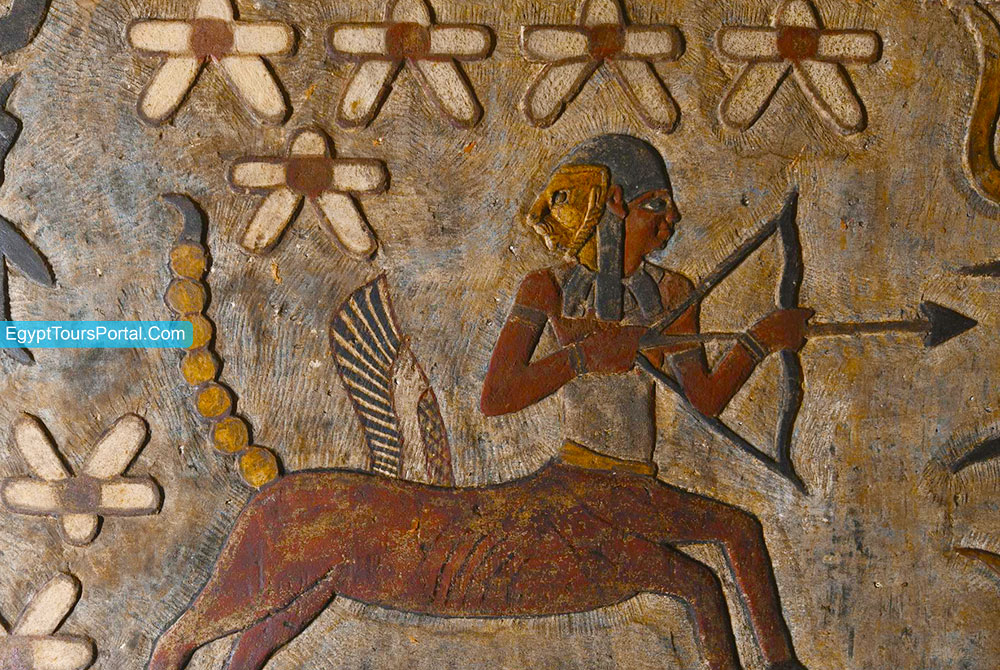
From bright vivid blues and deep dark hues to muted greys and drab greens, the varied shades of ancient Egyptian Blue pigment have now been recreated by a group of US scientists and archaeologists. This work could assist researchers in identifying and possibly restoring ancient artifacts that utilized this valued pigment – including murals on ancient Egyptian tombs, monuments, and sarcophagi.
The formula for the renowned pigment appears to have been a well-kept trade secret among craftsmen for much of the past 5000 years. ‘Our earliest evidence of it originates from ancient Egypt, and then there is proof of this type of procedure for many millennia afterward,’ states John McCloy, a materials scientist and engineer at Washington State University, who is the lead author of the research.
He clarifies that the primary colorant in Egyptian Blue was the copper-based mineral cuprorivaite – a variant of copper calcium silicate – but it could be manipulated to generate paints in a broad spectrum of colors, contingent on which additional substances were employed and how the mixture was processed.
Specifically, the team discovered that several variations of the pigment production method yielded differing quantities of copper-doped or ‘green’ glass, resulting from the reaction of cuprorivaite with soda (Na₂CO₃) in the natron-derived mixture. McCloy points out that managing the amount of green glass produced during the process was vital to an effective recipe.
Conservation scientists and archaeologists familiar with the application of Egyptian Blue contributed to this new research, with the team analyzing genuine samples of the pigment, which was utilized to paint stone, pottery, wood, and a type of ancient Egyptian papier-mâché known as cartonnage.
The researchers then synthesized various shades of the ancient pigment by adjusting heating durations and the raw materials accessible to the ancient Egyptians – sources of copper, silica, lime or soda, and potentially the ashes of saltwater plants – and examined the resultant substances using electron beam x-ray microanalysis and other methods to gain insights into the factors influencing the colors.
Ultimately, the researchers selected the top 12 recreated shades for exhibition in an ancient Egyptian gallery at the Carnegie Museum of Natural History in Pittsburgh, Pennsylvania. McCloy is optimistic they will aid conservation scientists in identifying the techniques used to produce Egyptian Blue paint on specific artifacts, and potentially inform their repair efforts.
Egyptian Blue was occasionally employed as a substitute for valuable inlays of lapis lazuli or turquoise – likely due to its significantly lower cost and easier accessibility, McCloy explains. It was also utilized for frescoes and mosaics by the Romans (Egypt’s rulers following the first century BC) and has been discovered in several Renaissance paintings. ‘Numerous artworks feature this pigment,’ McCloy notes. ‘It can shine through other layers of paint, allowing it to remain unseen on the surface.’
Archaeological scientist Moujin Matin, an authority on ancient pigments at the University of Western Ontario who did not participate in the recent research, notes that Egyptian Blue symbolized the ancient Egyptian civilization. ‘The production of Egyptian Blue was a highly advanced process, achievable only within a well-established cultural and technological framework,’ she remarks. ‘Culturally, the significance of blue in religious symbolism and everyday existence endowed the pigment with unique importance, ensuring its persistent value and application.’
The pigment’s adaptation for various artistic uses also contributed to its widespread acceptance. This ‘not only facilitated the creation of Egyptian Blue but also bolstered its extensive application and remarkable endurance over the centuries,’ she adds.
Archaeologist Arianna Traviglia from Italy’s IIT Centre for Cultural Heritage in Turin, who was also not involved in the study, indicates that the research has established a ‘clear correlation’ between the parameters employed in pigment production and the resulting colors. ‘Comparative analyses between lab-synthesized materials and archaeological samples are essential for enhancing our understanding of ancient technological expertise,’ she states.